Posted by: Ken @ 10:11 pm
This Prairie Warbler, at nearby Chapel Trail Nature Center in Pembroke Pines, provided us with some delightful views: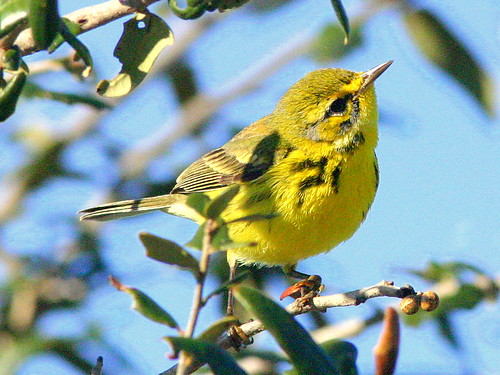
If you have read my journals before, you know that I do most of my birding locally. Although field trips and seeing new and exotic species is enjoyable, I have discovered that covering the West Miramar ESL (Environmentally Sensitive Land) has its own rewards. This local patch of recovering Everglades is within easy walking distance from our home, and almost every visit provides a humble surprise.
This morning dawned cool and windless, promising ideal photography, if I could find suitable subjects. Sure enough, after walking the quarter mile on the gravel road, we turned into the first wooded area.
To our surprise, a beautiful Blue-headed Vireo flew up to the top of a tree right in front of us. It disappeared almost as quickly, and I only had time to click the shutter three times. The third view was a “butt shot” as it made its exit.
I did not expect the other photos to be very good, but, after downloading the images at home, was pleased at what I had captured:
The surface of the lake was unusually still, and this Great Blue Heron escaped before I could get a good portrait, but it accented the beauty of the water and vegetation as it flew northward with the light behind it:
Then, on the way to the wetlands another quarter of a mile along the levee that borders the ESL, we encountered one of my favorite LBJs (Little Brown Jobs), an Eastern Phoebe. This bird proves that brown is beautiful!
The phoebe’s muted pastels fit so nicely with its habitat:
This first-year Red-shouldered Hawk is molting. At first, I mis-identified it as a Red-tailed Hawk, as it appeared quite bulky, and immature Red-tails can have light “windows” near their wing tips, but I have never seen white ones. Vince Lucas pointed out how white the windows are, and now I also see that its head and beak do not look like the Red-tail’s.
Note how its four new outer primary feathers contrast with the other six worn primaries and its frizzy old tail feathers:
Another view shows a reddish cast to the plumage, and the smaller bill and head that support Vince’s conclusion: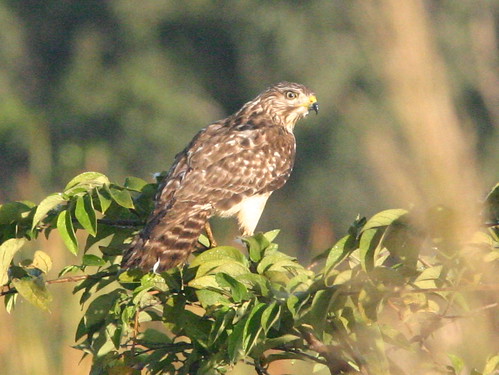
A Loggerhead Shrike was on duty, monitoring our every move:
After entering the shaded path that leads into the heart of the wetlands, I heard breaking branches to my left, and a large doe suddenly appeared just ahead of me, stared my way for a while, then bolted away.
While deer are very common in many places, it was a treat to see one so near our home:
Moments later, a spike buck emerged from the brush and took several steps towards me before realizing the potential danger:
Then, as I approached the bank of the small canal that runs along the path, a Cottonmouth slithered down from the opposite side, and angled across the stream towards me, getting within about 10 feet of my position. Though not considered aggressive, its venom is particularly potent.
Note how this poisonous moccasin characteristically swims on the surface of the water, its head held high. Non-poisonous water snakes usually duck underwater and flee:
On the way out, a Great Blue Heron (maybe the same one seen earlier) was struggling to swallow quite a large fish. It seemed to lodge in its lower esophagus. Even after getting it down, the bird kept drinking water and splashing with its beak.
Click on the image to see the full sequence of photos:













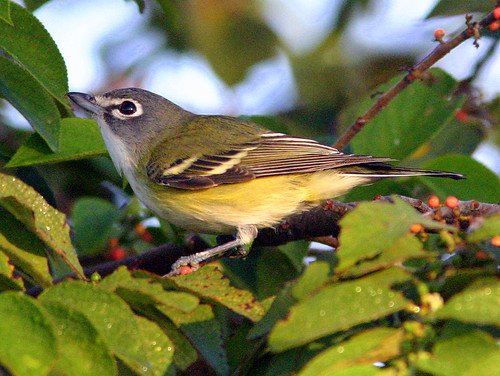
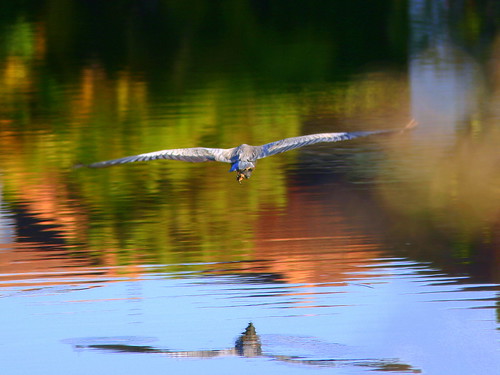

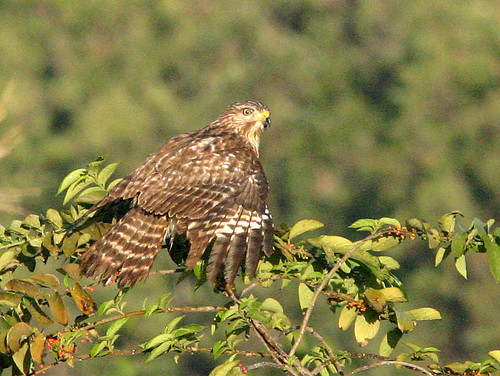

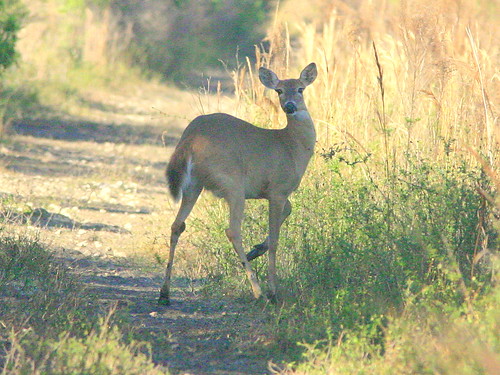
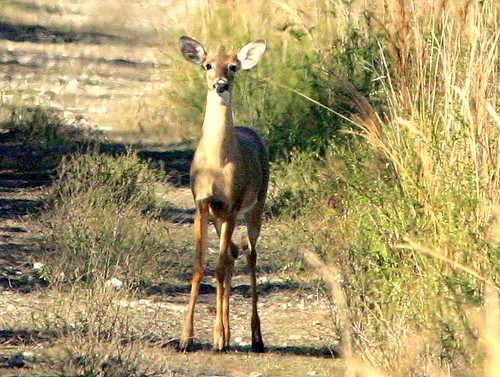
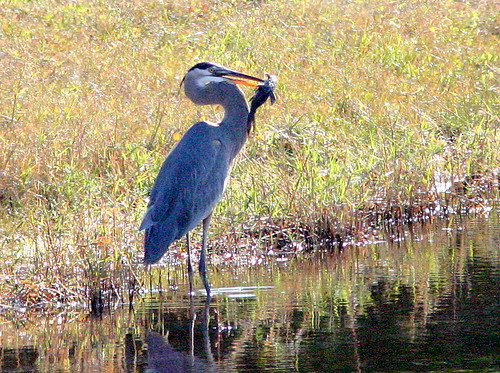
January 13th, 2009 at 9:24 am Ken: It’s a Red-shouldered Hawk, not Red-tailed Hawk. See those white “windows”? Those are pretty diagnostic of Red-shouldered Hawk. . . .
[Thanks, Vince! Now also I see that the bird has a more reddish cast than a typical Red-tail, and its face and beak are more “innocent” looking– bigger eyes, shorter bill. Red-tail immatures can have light windows, but I have never seen any this white. Ken]
January 16th, 2009 at 2:15 pm Great photos, the weather looks nicer there than here! It is so nice to not have to go far to find birds. Good birding to you!
January 16th, 2009 at 9:58 pm Hi Ken, I love your photos and the trip through the Chapel Trail Nature Center was delightful. Thanks!
January 17th, 2009 at 2:08 pm Thanks for your comments, Larry and Eddie!
Larry, I enjoy your Blog, especially the bluebirds. When visiting our son and family in Amarillo we encountered a good number of Mountain Bluebirds. See: http://blog.rosyfinch.com/?p=198
Eddie, I find enjoy your writings and conservation efforts to be exemplary. Your weekly bird picture feature has attracted many fine contributions from readers. Yes, having a small “patch” that can be visited frequently (like your back yard preserve) seems to connect one to the subtle seasonal changes, with something new almost every day.
Ken